Our Arbroath History
Arbroath is important to me because of the connection to my ancestors. So many of my ancestral lines came together in Arbroath that it must have something special.
Equally, Arbroath reminds me of good times spent there; with my family, with my parents, and that my Mum spent there with her parents. Since I lived only briefly in Arbroath, most of my time there has been on holiday. Arbroath is a holiday town and has many attractions, and the photos included below cover this aspect. Arbroath took us away from Glasgow, Kilmarnock and Edinburgh.
So here is a bit of genealogy with a bit of social and industrial history to explain how our Arbroath connection started and developed. Followed by reminders of the interesting places to visit in and around Arbroath.
Family History
In the second half of the 19th Century, thousands of people and 3 families in particular moved into Arbroath. The 3 families were from different parts of Scotland, engaged in different occupations, and they came together to make Arbroath very important to at least 3 generations of their descendants.
The MacDonald Family
The MacDonald family arrived from Skye around 1865. It comprised William, Bella McLeod and daughters Maggie, Flora, Chirsty and Kate. Their eldest daughter Ann was married to a Coast Guard and was already living in the area, in the Coast Guard Station at Auchmithie. And their second daughter Jane also moved to Arbroath about this time.
William MacDonald was a hand loom weaver in Skye, and perhaps there was plenty of work for him in Arbroath. He seems to have woven wool and tartan in Skye. We do not know whether that continued in Arbroath, or whether he changed to sail cloth. Or perhaps it was the work available for his daughters which brought them all to Arbroath; they had been domestic servants in Portree according to the 1861 Census, even 10 year old Kate. According to the 1871 Census, the daughters all worked in mills and factories connected with flax. It is possible that Ann told them how much more work there was in Arbroath compared to Skye, or Jane could have been the mover.
The Buick Families
Around the same time, between 1864 and 1871, Ann Pyper, widow of James Buick, her children James, David, Ann and Christina, and her second husband arrived from Johnshaven.
Patrick Toshney, the second husband of Ann Pyper, was also a weaver. In Johnshaven he was recorded as being a sacking weaver, presumably using jute, and in Arbroath he was also a weaver. Both James and David Buick were mill workers in 1871; though it could have been a flax mill, a snuff mill or a meal mill. It looks like the availability of work attracted them to Arbroath as the flax industry in Johnshaven did not get underway until 1898.
James Buick married Chirsty, later known as Christina, MacDonald in 1876 and their first daughter was Annie Pyper Buick, my grandmother. Their other daughter was Bella McLeod Buick, my great aunt.
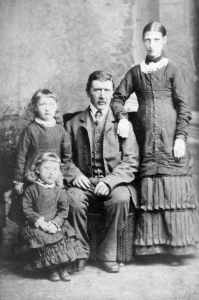
Great Grandparents James Buick
and Christina MacDonald
with Annie and Bella.
About 1882-1885
The Cargill Family
A little later between 1877 and 1881, as if there were not already enough Cargills in the town, Arbroath was hit by yet another Cargill family. They reputedly arrived by fishing boat from St Andrews, although they were married in and started their family in Auchmithie. They could only have been in St Andrews for 4 or 5 years as only their 2 youngest were born there. Robert Cargill and Ann Anderson brought their children Nell, Robert, Jeanie, David and Annie to Arbroath. David was my grandfather.
Robert Cargill was a fisherman and Arbroath had made a determined effort to attract fishermen since about 1800. I have no idea why he left Auchmithie for St Andrews rather than Arbroath, nor why he subsequently came back to Arbroath. Arbroath had a growing population, and maybe had more to offer than St Andrews, and certainly more than Auchmithie. At least Arbroath had a man-made harbour, unlike Auchmithie where it was 1890 before the harbour was built. Of course, he may have had other reasons, as both Arbroath Golf Club and Arbroath Football Club were founded in 1878!
The Town
Around this time, Arbroath was experiencing great industrial growth. In 1875 the flax industry was at its peak and there were 34 mills and factories in Arbroath. The 1831 population of 11,000 doubled by 1885. Sail cloth weaving alone supported 5,000 jobs and attracted many workers from the surrounding rural parishes. The large influx of workers resulted in Arbroath's growth, with the areas such as that once known as the Wyndies being built especially to house handloom weavers.
Fishing had been important to Arbroath for centuries, and from 1799 fishermen from the neighbouring village of Auchmithie were encouraged to relocate to the town's safer harbour by Arbroath Town Council. By 1826 only three fishing boats had taken up the offer, prompting the council to extend their offer to the fishing communities of Shetland and Bervie. Land for building homes was offered to the fishermen, who chose to settle at the foot of the town (the fit o the toon) near the harbour. During the nineteenth century there was a steady drift from Auchmithie to Arbroath, by 1855 Arbroath overtook Auchmithie in terms of number of boats and fishermen and by 1880 Arbroath's fishermen numbered 150.
My Grandparents
In 1899, David Cargill married Annie Buick in Arbroath. They had 6 children, 5 of them born in Glasgow. David and Jeanie died young, Tom emigrated to America, and Bella, Annie and Flora went to Kilmarnock with their parents and settled there.
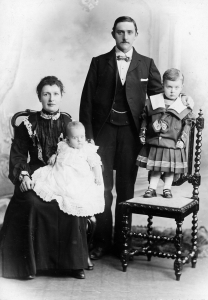
Grandparents David Cargill
and Annie Buick
with Tom and Bella in 1904.
David Cargill should have been a fisherman like his forebears and his brothers, but he was always sea-sick. So he was apprenticed as a boot finisher. Thanks to the Arbroath Timeline web site, I found that a shoe factory was built in Hill Road in 1882. (This factory later became the Marine Ballroom.) Hill Road is the next street over from Union Street East / John Street and it seems obvious that that is where he worked. Then I found from the same site that Arbroath had 33 shoemakers in 1826 and in 1887 there were 700 people employed in shoemaking. So there goes another theory.
Before she married, Annie Buick worked in a mill, like her aunts and uncles. She was a reeler in a flax mill and her sister Bella was a canvas weaver.
The 3 Cargill sisters had spent their infancy in Glasgow, and then spent 5 or 6 of the best years of their lives in Arbroath. So they loved Arbroath and were heart-broken when the family moved to Kilmarnock. So the connection with Arbroath was very strong for them, especially as they had aunts, uncles and cousins there.
Holidays in Arbroath
The following is a view across the years of some of Arbroath's attractions.
Holiday photos of places like the wee train, putting greens, the bathing pool, the Skate Inn, the Central Bar, Gayfield Park, the Abbey would be welcomed for inclusion in the memories that follow.
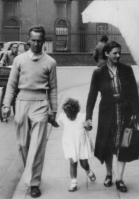
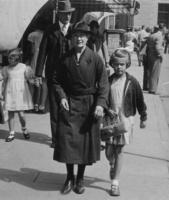
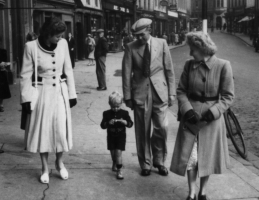
Brothock Bridge & the High Street.
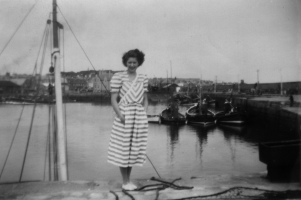
The Harbour.
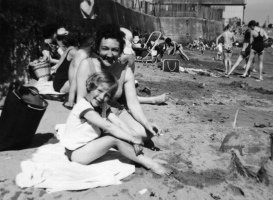

The Dockie Sands; the West Links.
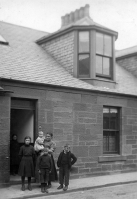
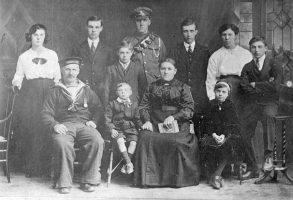
26 Union Street East, early 1900s; A fisher family around 1915.
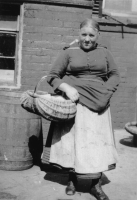
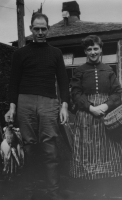
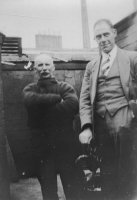
Fisher folk & visitors in Union Street East, about 1928.
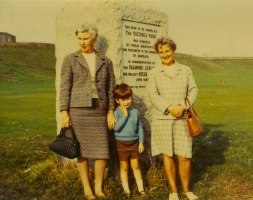
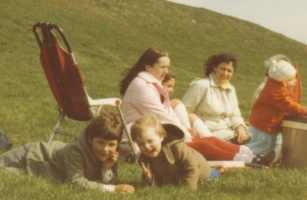
The Victoria Park.
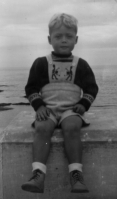
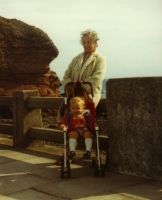
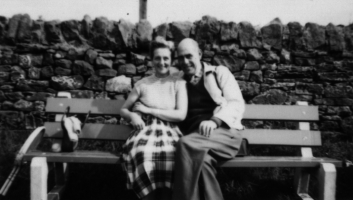
3 seats near the Ness.


The Cliffs; the Flairs.
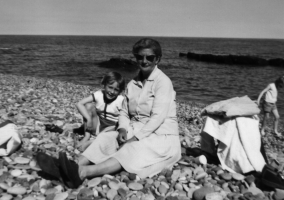

Auchmithie.
Many of our ancestors also died in Arbroath, and it is interesting to visit their graves in the Eastern and Western Cemeteries. We know the locations of the graves of :-
- Great Great Grandparents William MacDonald and Bella McLeod
- Great Grandparents Robert Cargill and Ann Anderson
- Great Grandparents James Buick and Christina MacDonald
- Grandparents David Cargill and Annie Buick
- Great Aunt Helen Cargill
- Great Aunt Jeanie Cargill and Aunt Nell
- Great Aunt Bella Buick
- Aunt Bella Flowerdew